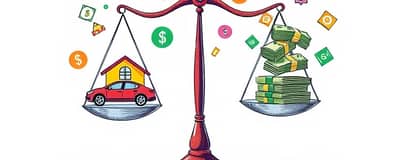Securing a personal loan can transform plans into reality, but only when you fully grasp the terms, costs, and commitments involved. This guide helps you make informed choices with confidence.
Understanding Personal Loan Fundamentals
At its core, a personal loan is an installment loan for various expenses. Whether you’re tackling debt consolidation, funding home improvements, or covering medical bills, knowing the basics empowers you to borrow wisely.
When you accept a loan offer, you’ll sign a promissory note—a legally binding promissory note that specifies your repayment schedule, interest rate, and all fees. Understanding every clause ensures you won’t be blindsided by hidden costs or penalties.
Breaking Down Key Loan Components
Several essential terms shape the cost and structure of your loan:
- Principal: The original amount you borrow, which dictates the base on which interest accrues.
- Interest Rate / APR: The annual percentage rate that combines the base interest with certain fees for a true cost comparison.
- Repayment Term: Ranges from 12 to 60 months; shorter terms raise monthly payments but lower total interest paid, while longer terms reduce monthly obligations at the expense of higher overall costs.
- Fees and Penalties: Including origination fees (1–6% of the loan), late payment fees, and potential prepayment penalties if you pay off early.
Unsecured personal loans require no collateral, though secured options exist for lower rates if you pledge assets.
Interest Rates in Today’s Market
As of 2025, the average personal loan APR is 20.78%, with top offers as low as 5.99% and high-risk loans reaching 99.99%. Your credit score remains the single biggest factor in securing favorable terms.
Fixed rates provide stability, while variable rates may shift with market indices. Always review rate types and potential fluctuations before signing.
The Application Journey: From Prequalification to Funding
Start by prequalifying: a soft credit check that estimates your eligible loan amount without affecting your credit score. This step reveals likely rates and terms, helping you compare offers side by side.
Typical requirements include proof of identity, income verification, and a credit check. Some lenders offer same-day funding, though most finalize disbursement within a day or two.
Protecting Yourself: Risks, Regulations, and Rights
Understanding the fine print safeguards you against costly pitfalls. Watch for:
- Prepayment Penalties: Fees charged if you pay off your loan early, which may outweigh the benefit of reducing interest.
- Late Payment Fees: Charges and credit score damage if you miss a payment.
- Jurisdiction clauses that dictate where legal disputes will be resolved.
Federal regulations cap APRs at 18% for most credit unions, offering consumer protection that banks and online lenders may not provide. Always compare the origination and hidden fees disclosed in the promissory note.
Choosing the Right Personal Loan for You
To align a loan with your financial goals, ask yourself:
- What is the total cost of the loan, including all fees?
- Which term length matches my monthly budget and long-term savings plan?
- Are there any additional or hidden fees to watch out for?
- Can I qualify for a credit union loan with lower rates?
- Does the lender report on-time payments to credit bureaus to help build my credit?
Running these checks before applying ensures you choose a loan that balances affordability with speed and flexibility.
Final Thoughts and Next Steps
Borrowing responsibly means understanding every aspect of your personal loan—from the initial promissory note to the last payment. By focusing on comparing APRs and terms, anticipating fees, and knowing your consumer protections, you can navigate the lending process with clarity and control.
Take time to research lenders, prequalify to preview loan offers, and only commit when the numbers align with your budget and goals. With a strategic approach, a personal loan can be a powerful tool for achieving milestones while safeguarding your financial health.














